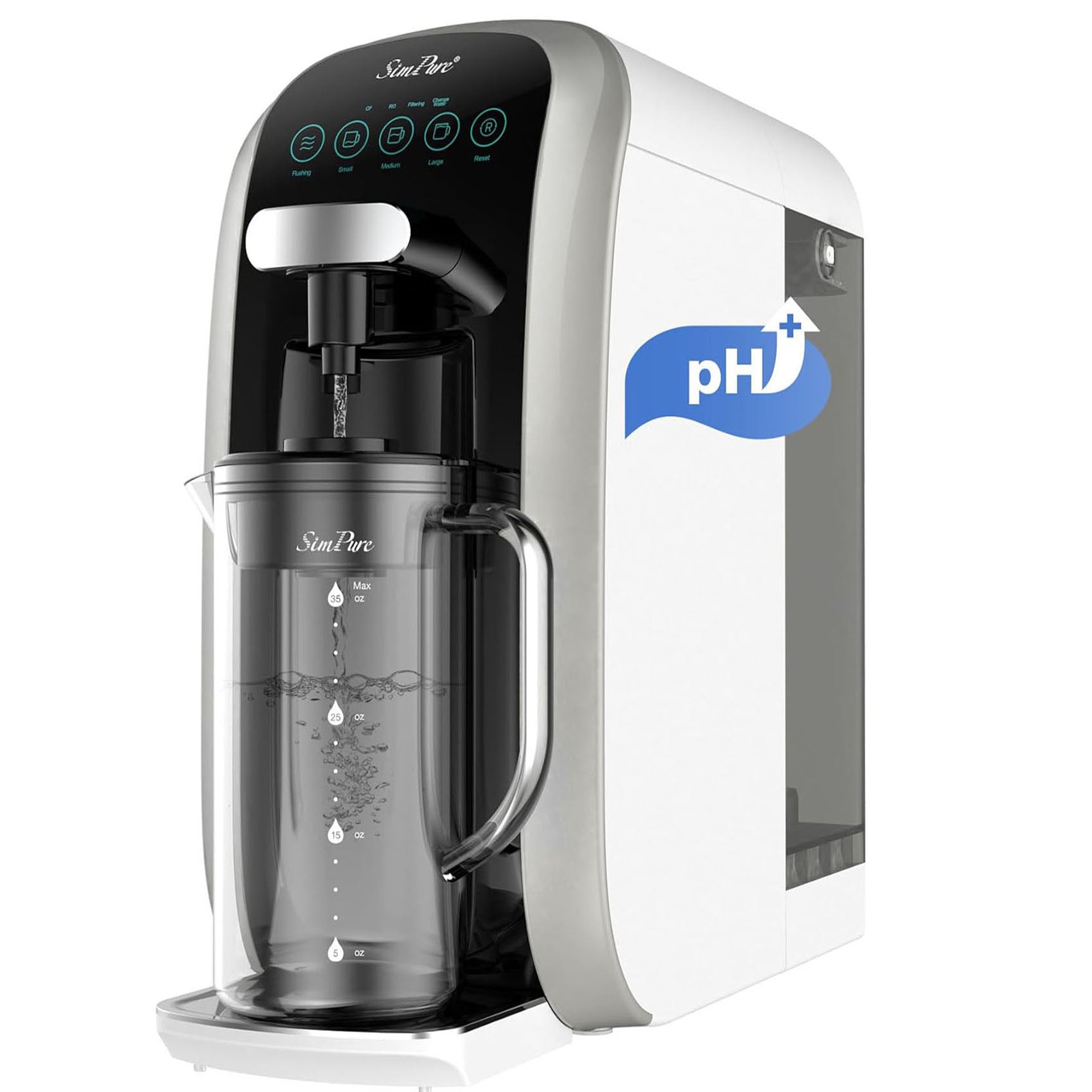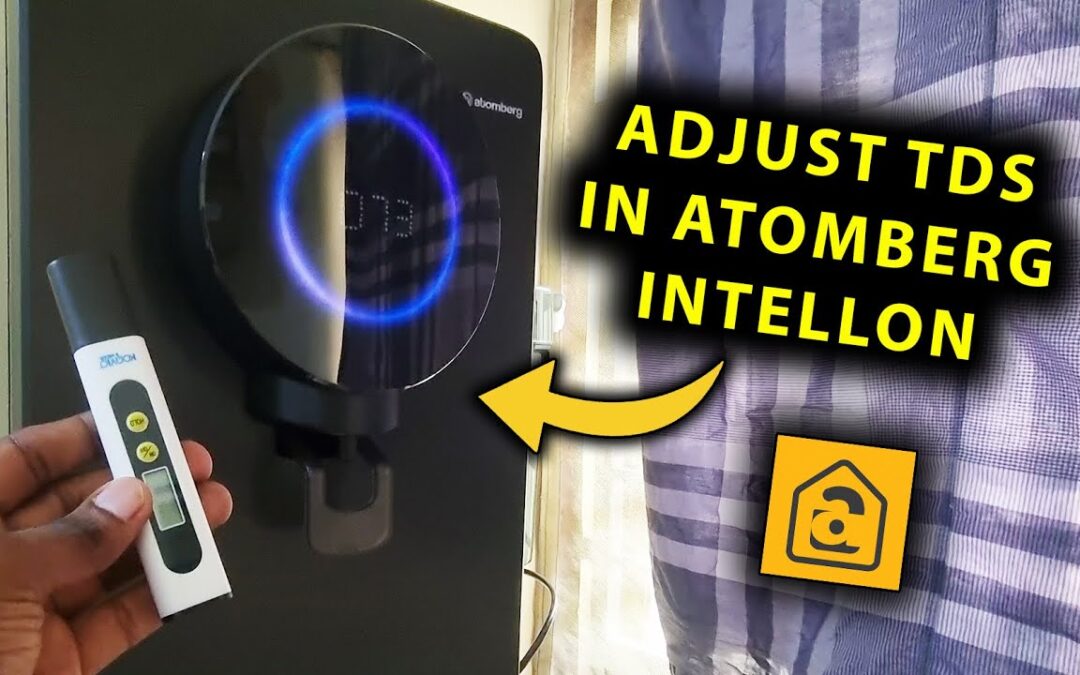Are you worried about the taste or quality of water from your RO purifier? The secret often lies in the TDS level—Total Dissolved Solids—that affects both flavor and safety.
If your water tastes flat or too salty, adjusting the TDS can make a big difference. You’ll learn simple, effective steps to control the TDS in your RO water purifier. By the end, you’ll enjoy fresher, cleaner water that suits your needs perfectly.
Keep reading to unlock the easy ways to get the best from your purifier!
What Is Tds In Ro Water
TDS stands for Total Dissolved Solids. It measures the amount of dissolved substances in water. These include minerals, salts, and organic matter. TDS affects the taste, health, and quality of drinking water.
RO water purifiers remove many impurities. But sometimes, the TDS level can be too low. This makes water taste flat or bland. Adjusting TDS helps improve water flavor and health benefits.
What Does Tds Mean For Water Quality?
TDS shows how pure the water is. Low TDS means fewer dissolved solids. High TDS means more minerals and salts. Both very high and very low TDS can affect taste and safety.
Common Sources Of Tds In Water
Natural sources like rocks and soil add minerals to water. Pipes and storage tanks can add metals. Pollution and chemicals also increase TDS levels.
Ideal Tds Level In Ro Water
The best TDS level for drinking water is between 50 and 150 mg/L. This range offers good taste and health. RO purifiers often reduce TDS below this range, needing adjustment.
Why Adjusting Tds Matters
Total Dissolved Solids (TDS) measure the amount of minerals, salts, and impurities in water. Adjusting TDS in RO water purifiers is important for health and taste. Water with very low TDS can taste flat and lack essential minerals. High TDS water may contain harmful substances that affect health.
Proper TDS levels keep water safe and enjoyable to drink. It also protects your appliances from damage caused by excess minerals. Understanding TDS helps you control the quality of your drinking water every day.
Health Benefits Of Proper Tds Levels
Water with balanced TDS supports body functions. Minerals like calcium and magnesium are good for bones and muscles. Too low or too high TDS water can cause dehydration or other health issues. Maintaining the right TDS ensures your water nourishes your body.
Impact On Water Taste
Water taste changes with TDS levels. Low TDS water often tastes bland or flat. High TDS water might taste salty or bitter. Adjusting TDS improves water flavor, making it more pleasant to drink. Good-tasting water encourages proper hydration.
Protecting Your Appliances
High TDS water can harm water purifiers and pipes. Minerals may cause scaling and blockages. This reduces the life of your appliances. Adjusting TDS helps prevent costly repairs and maintenance. It keeps your RO purifier working well longer.
Tools Needed For Tds Adjustment
Adjusting the TDS (Total Dissolved Solids) in your RO water purifier needs specific tools. These tools help measure and control the water quality. Using the right tools ensures safe and clean drinking water.
Below are the main tools you need for TDS adjustment. Each tool plays a key role in the process.
Digital Tds Meter
This small device measures the TDS level in water. It shows the amount of dissolved solids in parts per million (ppm). It helps you know if the water is too pure or has too many minerals.
Screwdriver
You need a small screwdriver to adjust the TDS controller on the purifier. The controller usually has a small screw to increase or decrease the TDS level. A proper screwdriver fits well and avoids damage.
Clean Container
A clean container collects water samples for testing. Use a glass or plastic container that is free from dirt. This keeps the sample pure for accurate TDS measurement.
Water Source
Access to the water you want to purify is essential. It can be tap water, well water, or any other source. The TDS level in the source affects how you adjust the purifier.
Step-by-step Tds Adjustment Process
Adjusting the TDS in your RO water purifier is important for better water taste and health. This process lets you control the minerals in the water. Follow these simple steps to adjust the TDS level correctly. It is easy and quick to do.
Check Initial Tds Level
First, measure the current TDS level of the water. Use a TDS meter for this task. Take a small water sample from the RO purifier. Turn on the meter and dip it in the water. Note the reading shown on the meter screen. This helps to know how much adjustment is needed.
Locate Tds Controller Valve
Find the TDS controller valve on the RO purifier. It is usually near the RO membrane or the water outlet. This valve controls the mix of purified and raw water. Knowing its location is key to making changes. Check the user manual if unsure about the valve’s position.
Adjust The Valve Gradually
Turn the TDS controller valve slowly. Make small adjustments at a time. Turning it clockwise or counterclockwise changes the TDS level. Avoid large turns to prevent sudden changes in water quality. Small steps give better control over the final TDS level.
Test Water After Adjustment
After adjusting the valve, test the water again with the TDS meter. Check if the new reading matches your desired TDS level. Repeat the adjustment and testing until satisfied. This ensures the water is safe and tastes good. Regular checks keep your water quality consistent.
Common Mistakes To Avoid
Adjusting the TDS (Total Dissolved Solids) in an RO water purifier needs care. Mistakes can reduce water quality or damage the purifier. Knowing what to avoid helps keep water clean and healthy.
Not Checking The Tds Levels Regularly
Skipping regular TDS checks leads to wrong adjustments. Water quality changes over time. Test TDS often to keep it in the safe range.
Ignoring Manufacturer Instructions
Each RO purifier has specific settings. Ignoring these can cause damage. Always follow the user manual for TDS adjustments.
Using Wrong Tools For Measurement
Using inaccurate meters gives false readings. This causes poor TDS control. Use a good-quality TDS meter for precise results.
Adjusting Tds Without Understanding Its Effects
Changing TDS blindly may remove good minerals. Balance is key for taste and health. Know how TDS affects water before adjusting.
Failing To Clean The Ro System
Dirty filters and membranes affect TDS levels. This leads to wrong readings and poor water quality. Clean and maintain your RO regularly.
Over-adjusting Tds Levels
Too much adjustment can harm water purity. Keep changes small and gradual. Check TDS after each step to avoid mistakes.

Credit: www.simpurelife.com
Maintaining Optimal Tds Levels
Maintaining optimal TDS levels in your RO water purifier is key to clean and healthy water. TDS, or Total Dissolved Solids, affects water taste and safety. Keeping it balanced ensures your water is neither too pure nor too mineral-rich. Regular care helps avoid health risks linked to improper TDS levels.
Regular Monitoring
Check your water’s TDS levels often using a TDS meter. This small device gives quick readings. Test at least once a month to catch any changes early. Note the readings and watch for sudden spikes or drops. Consistent monitoring helps keep water quality steady.
Scheduled Maintenance
Clean and replace filters as recommended by the manufacturer. Dirty filters can raise TDS levels or lower water flow. Set reminders for filter changes and membrane checks. Proper maintenance extends purifier life and keeps water safe. Follow the schedule strictly for best results.
Frequently Asked Questions
What Is Tds In Ro Water Purifier?
TDS stands for Total Dissolved Solids, measuring impurities in water. It affects taste and safety. RO purifiers reduce TDS to improve water quality.
How To Check Tds Level In Ro Water?
Use a digital TDS meter to measure water’s dissolved solids. Dip the meter in water, wait for reading, then adjust RO settings if needed.
Why Adjust Tds In Ro Water Purifier?
Adjusting TDS ensures safe, balanced mineral content. Low TDS water can taste flat, while high TDS may contain harmful substances. Proper adjustment improves taste and health benefits.
Can Tds Be Increased In Ro Water Purifier?
Yes, by using a TDS controller or mixing RO water with mineral-rich water. This helps maintain essential minerals and improves taste without compromising purity.
Conclusion
Adjusting TDS in your RO water purifier keeps your water safe and tasty. Check your water’s TDS level regularly for the best results. Use a TDS controller or blend water to reach the right balance. Clean your filters on time to maintain good water quality.
Simple steps help you enjoy pure, healthy water every day. Stay mindful of your water’s taste and health benefits. Clean water means a healthier life for you and your family.

Hasan Al Sarker is a Reverse Osmosis Specialist. He has worked for many years to ensure safe drinking water for all. His research paper has been published in several journals, including Issue, Medium, and Slideshare. He is recognized as a water doctor among specialists though he did not attend medical college.
Besides working as a researcher of reverse osmosis technology, he is also very fancy with the kitchen and cooking. His guides are reading thousands of people every day. As a head of content, he is responsible for all the published articles at RO System Reviews.

